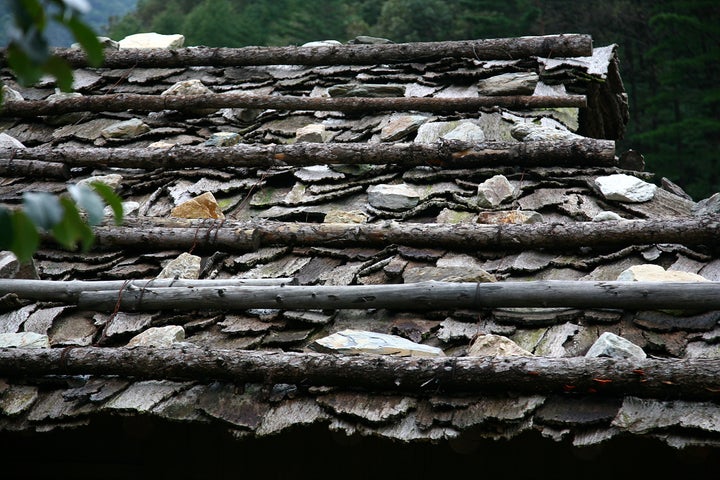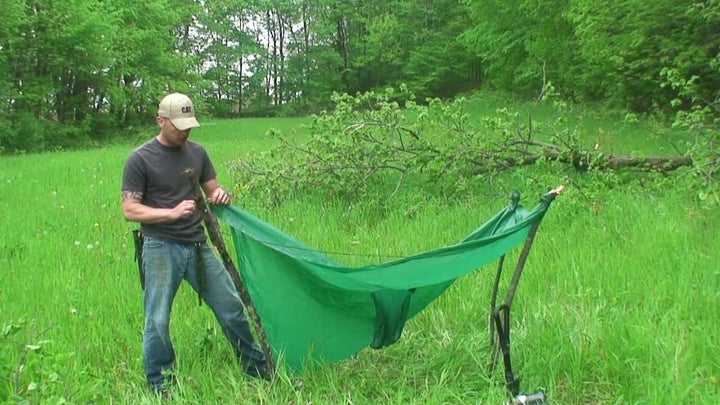As I learn more and more about survival, I realize there are always strategies I had never previously known. No matter how much experience I gain, other survivalists always come up with clever solutions. Here are a few that may be new to you as well:
1. Look for super tinder.
These are natural materials that are highly flammable even when wet. The easiest to find are birch bark and pine resin. Both of these are great to add to other tinder to get a blazing fire.
2. Use a smoke bath for hygiene.
If you are in cold weather and do not want to get wet, you can still bathe. Smoke from your campfire will kill surface bacteria and help prevent illness.
Here is a great video about smoke baths from Rob at Sigma 3 Survival School:
3. Try spit fishing.
Wade into shallow water and pull up the front of your shirt to use as a net. Then spit into the water in front of you. Small fish are attracted to the saliva and will swim into your net. You can eat them for a snack or use them for bait.
4. Bring a small manual pencil sharpener.
Most sticks have dry material on the inside even when it has been raining for days. Use the sharpener to shave off the wet material, and then the dry shavings make great tinder.
5. Make fire from ice.
If you have no other way to make fire and it is winter, you can create a lens from a chunk of ice. Use a rock or knife to trim it down to a piece that is three inches across and two inches thick. Ideally, you want a piece that has few bubbles and debris inside. Then use the warmth of your hands to smooth the outside and give you a clear surface. Hold it perfectly still and adjust the distance from the tinder until it is a fine point. If it is a bright sunny day, you should get the heat needed to light dry tinder.
6. For a waterproof roof, use birch bark.
If you can find a white birch that has recently fallen, you can strip the bark in square sections. If you layer them on your roof like shingles, the water will cascade down and off the edge keeping you perfectly dry.

7. Build your own water filter.
Find a tube or container and layer gravel, sand, and charcoal. Put a piece of cloth over top and make sure there is a hole in the bottom and a catch container. Water you pour through should be partially filtered and much better to drink than tainted water.
8. Do not hunt at night.
It is tempting to attempt this knowing how active the animals are, but it is easy to get hurt. Also, the animals that are active at night have much better eyesight than humans. Your odds are not good.
9. Avoid frostbite by wiggling.
Frostbite attacks your fingers, toes, ears, and nose. Wiggle these extremities to keep the blood flowing and prevent damage. You can also smear chapstick or Vaseline on them for an added layer of protection.
10. Build a rain catch.
This can be done with large leaves or plastic. It can be simple, such as a hole in the ground lined with plastic, or you can get complex and direct runoff from the roof of your shelter into a catch. In some cases, this is the cleanest water you will find.

11. Remove the bark from wet branches.
Often larger branches that are wet will have most of the moisture in the bark. Strip it off for drier fire wood.
12. Build a lean-to shelter.
If you are in a hurry, lash a ridge pole between two trees. Lean poles against it at 45 degrees and pile debris on top. Make a bed underneath and your shelter is done!
13. Keep fat in your diet.
If you are eating nothing but lean meat such as rabbit, you can contract what is known as rabbit starvation. This illness is very dangerous and can be deadly. Eat internal organs, eyeballs, and ground bones to add fat to your diet.
14. In deep snow, head for an evergreen tree.
Often there is a dry spot near the trunk that is covered with fluffy dry needles. The dip in the snow gives you wind protection and overhead branches give you a little overhead protection as well.
15. Use a stick to determine which way is north.
Shove a stick straight in the ground, mark that shadow, and wait 15 minutes. Then draw a line from the tip of the new shadow to the tip of the old shadow. That is your east/west line. Draw a perpendicular line and you now have your north/south line.
16. Eat insects for a good protein source.
Cook your insects to eliminate parasites. Avoid any that are brightly colored, foul-smelling, or hairy. These could be poisonous.
17. Use mud for skincare.
Mud can replace sunscreen if needed and also draw toxins out of the skin. If you get poison ivy or bug bites, smear mud on it and let it dry. As it dries, it will draw the toxins out of your skin.
18. Distill saltwater for drinking.
It is not safe to drink saltwater, but it can be purified. Put some in a container and attach a tube to the top. Run the tube to a catch container and the put the water over a fire. As the water evaporates, it will travel down the tube, condense, and then drip into the catch. You can wrap a wet cloth around the tube to speed condensation.
19. Build a top-down fire.
If you want to sleep all night and avoid getting up to add wood to the fire, this design is ideal. Start with large logs laid on bottom, then a layer at 90 degrees, and gradually decrease the size of the wood each layer until it is several feet tall. Also, make sure you fill the gaps on each layer with dirt or sand to control the oxygen flow. Build a teepee fire on top and it should burn for most of the night.
20. As tempting as they are, avoid mushrooms unless you are an expert.
Often people think of mushrooms like berries or nuts… an easy food source to gather in the woods. Unlike berries and nuts, mushrooms are very hard to identify. Except for a few varieties, there are many lookalikes, and a high percentage of them are poisonous. I avoid them unless I come across one of these easier varieties.
The best way to remember tips like these is to gain practice using them. Try to find time to test a few of them out in your back yard or on your next wilderness adventure. By investing a little time, you drastically increase your odds of success.
Looking for more survival tips? Check out this full list of 117 survival tips and tricks on AllOutdoors.com!